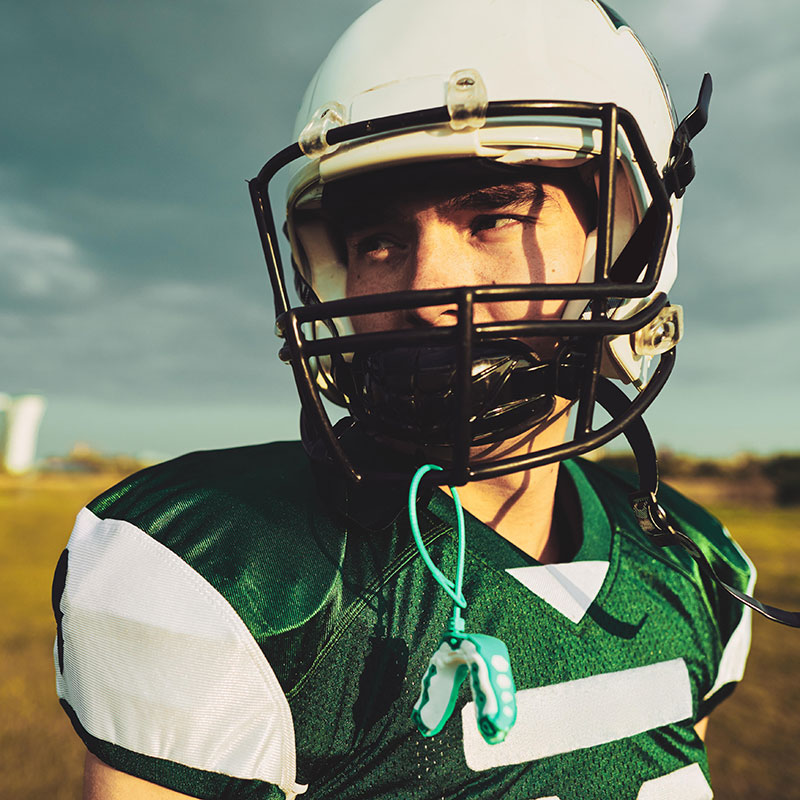Athletes can prevent or reduce oral trauma through the use of a properly fitted appliance.
Dental accidents can happen in almost any situation, sport or non-sport activities, but the most commonly associated oral injuries are in children between ages 7-17 with basketball and baseball. Now days, football, lacrosse and hockey rules require mouth pieces for protection, so we see fewer dentalinjuries in these sports since most of these athletes have some form of protection already.
Although mouth guards cannot always prevent the injury, they can redistribute the blunt force at the impact site. The idea is to reduce the force transmitted to the teeth and spread the impact along the surface of the appliance. This reduces the threshold at which the injury to the tooth occurs.
Appliances that fit loosely will not distribute collision forces as well as those that are well fitting. Also, loosely fitted mouthguards can be expelled from the mouth more readily and thus offer no protection once displaced from the area. The more comfortable the mouthguard, the more likely an athlete is to use it.
Three types of Mouthguards – they do not provide equal levels of protection.
Stock mouthguards are “one size fits all”. These offer the least protection, can be easily dislodged, impair speech and breathing.
Boil and Bite Mouthguards are similar to stock guards but come in several sizes and offer a slightly better fit. This type is NOT recommended for those wearing braces since the teeth are regularly moving toward a straighter position. A boil and bite tooth position today will not be the same as the position in the near future and either inhibit your brace progress, decrease the level of fit and /or break a brace loose. This is the most common type on the retail market.
Custom Mouthguards are made on a moldor replica of your exact teeth. These offer the best fit possible. If you have braces, your orthodontist can plan for it to fit over the braces and tooth movements when it is fabricated. Of course, these are more expensive than stock or boil and bite styles. However, dental injuries and extensive dental restorative procedures are exponentially more costly.
Mouthguard care
Keep it clean and store it a sturdy container that has vents so it can air out or dry, this will help prevent bacteria from growing on the appliance and transferring that into the oral cavity.
Blog info: add this lower section to the top part for the blog post.
First Aid for immediate steps with mouth injuries before you call a dentist or your orthodontist
Knocked Out Tooth:
Handle the tooth by the crown, the large part you see when its in the mouth. Rinse the root off with cool water but do not scrub it. If it is an adult tooth, gently try to re-insert it back into the socket. You do not need to save a baby tooth. If it cannot be re-inserted, put the tooth in a container with milk, saliva, or cool salt water. Take the tooth and go to the dental provider as soon as possible, ideally, within the hour.
Broken or Cracked Tooth:
Put any pieces of the tooth into wet gauze or a wet towel and bring it with you to the dentist. Place a cool pack on the injured area of the face to reduce swelling or bleeding.
Tongue Bite or Lip:
Clean the area with a wet cloth. Hold a cold pack against it to keep the swelling down. Holding the lacerated pieces together will help the tissues fuse as the blood clots. If the cuts are severe and the bleeding will not stop then see your dentist or medical provider for immediate care.

